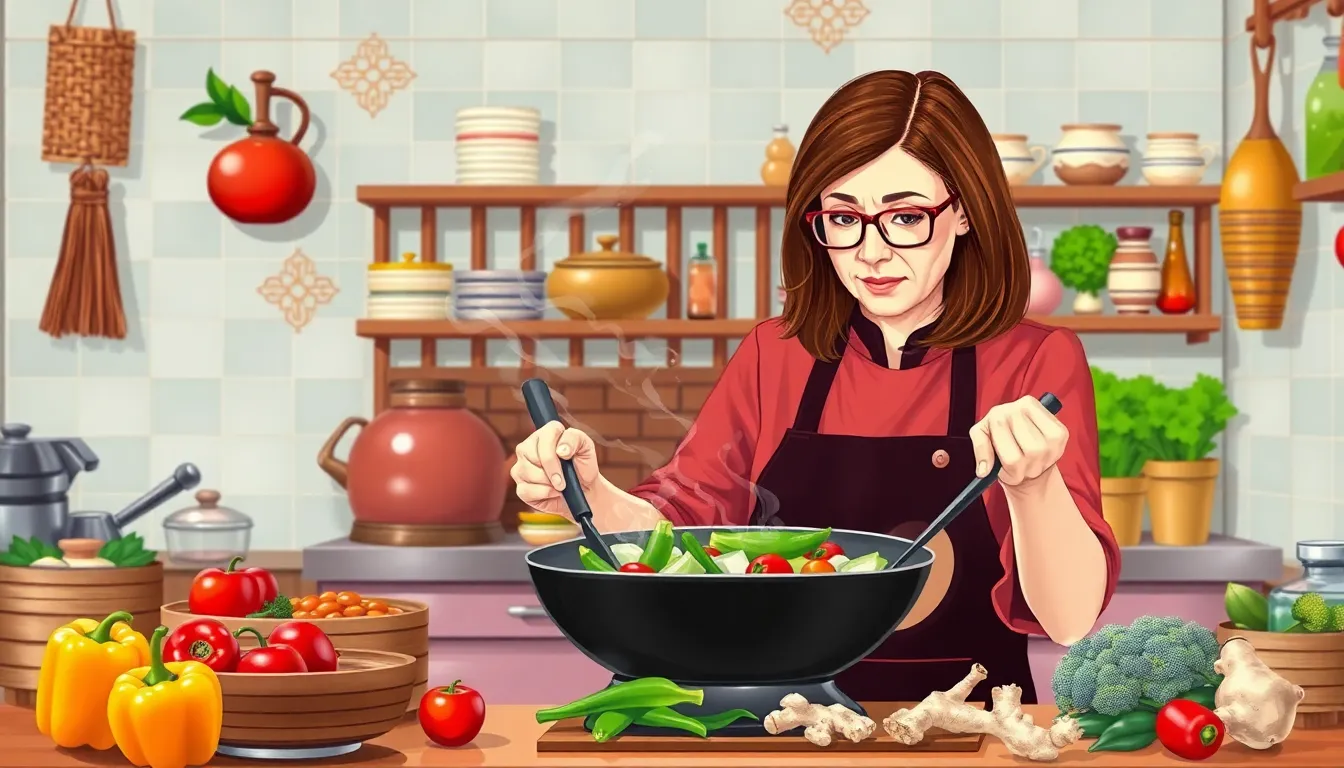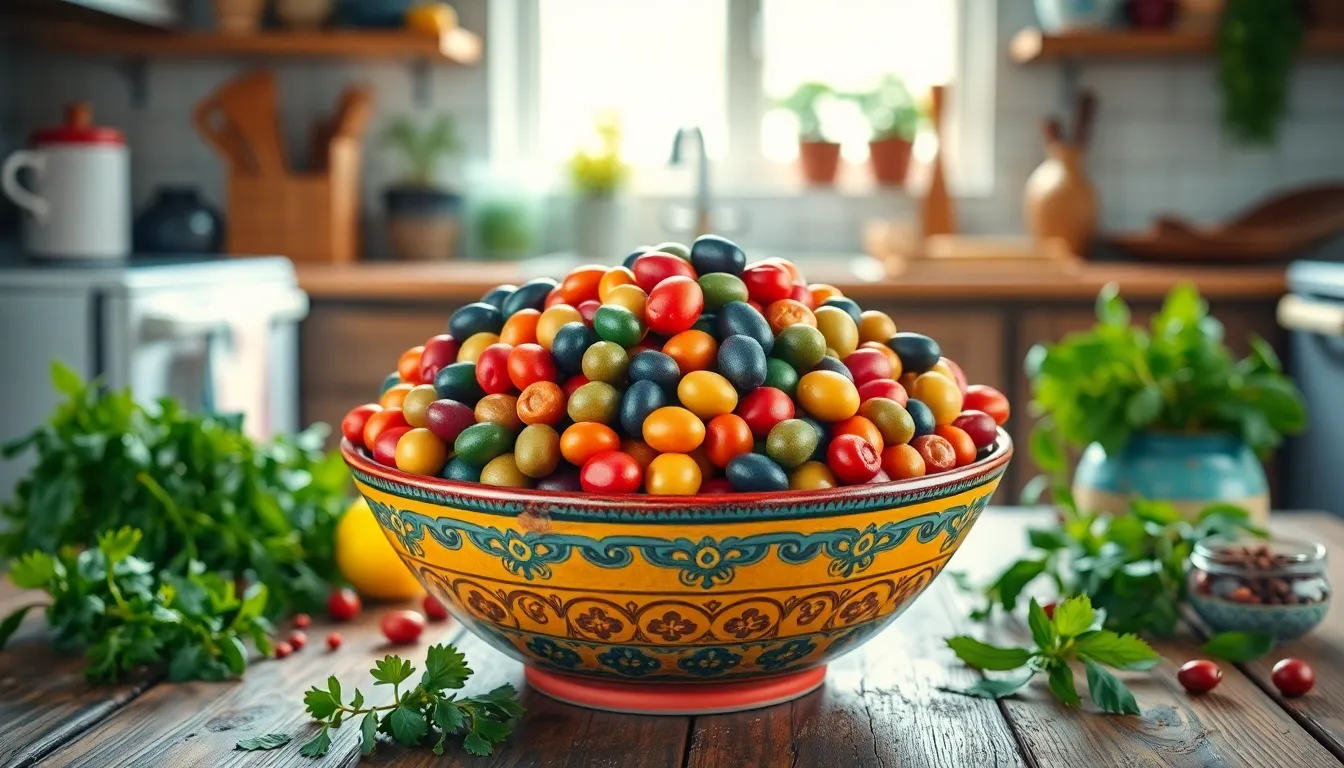When it comes to culinary adventures, few cuisines are as captivating as Chinese cooking. With techniques that could make a seasoned chef weak in the knees, it’s a delightful blend of art and science. Whether it’s the sizzling sounds of stir-frying or the delicate dance of steaming dumplings, each method tells a story steeped in tradition and flavor.
Table of Contents
ToggleOverview of Chinese Cooking Techniques
Chinese cooking techniques encompass a variety of methods that enhance flavors and textures, reflecting both tradition and innovation. These techniques include stir-frying, where ingredients cook quickly over high heat in a wok, preserving the food’s natural taste and nutrients. Steaming represents another essential technique, allowing delicate dishes like dumplings to remain moist while highlighting their fillings.
Braised dishes feature slow cooking in seasoned liquid, enriching flavors, while deep-frying introduces a crispy texture beloved in many Chinese cuisines. Roasting, often used for meats, enhances flavor through caramelization and creates an appealing appearance. Each technique serves a purpose, whether it’s preserving the integrity of an ingredient or promoting specific flavors through cooking methods.
Blanching, a quick boiling followed by ice water immersion, maintains color and texture, especially for vegetables. Sautéing differs from stir-frying as it involves cooking ingredients in a small amount of oil over moderate heat, ideal for building flavors in a dish.
Fermentation, common in the preparation of sauces like soy, enhances umami flavors and adds complexity to dishes. Additionally, pickling preserves vegetables, offering distinctive flavors that balance meals.
Understanding these techniques is crucial for anyone wanting to master Chinese cooking. Each method unveils a different aspect of Chinese cuisine, contributing to its rich tapestry of flavors and culinary history.
Stir-Frying
Stir-frying stands as a fundamental technique in Chinese cooking, showcasing a combination of speed and precision. This method emphasizes high heat and quick cooking times, ideal for preserving the freshness of ingredients.
Essential Equipment
A sturdy wok is crucial for effective stir-frying, offering a wide surface area and a rounded bottom that promotes even heat distribution. Using a spatula, often made from wood or bamboo, allows for safe maneuvering of ingredients. A high-powered stove enhances heat control, ensuring the right temperature for fast cooking. A lid can provide steaming capabilities during the process.
Key Ingredients
Fresh vegetables play an integral role, contributing vibrant colors and textures to stir-fried dishes. Proteins such as chicken, beef, or tofu add substance to meals. Sauces, including soy sauce, oyster sauce, and sesame oil, amplify flavors significantly. Aromatics like garlic, ginger, and scallions create a fragrant base, invigorating the dish. Stir-frying often employs a variety of herbs and spices that enhance the overall taste and experience.
Steaming
Steaming stands as a prominent technique in Chinese cooking, widely recognized for preserving the nutrition and flavor of ingredients. This method gently cooks food using steam, ensuring moisture retention and vibrant textures.
Types of Steamer
Bamboo steamers dominate traditional Chinese kitchens. These devices consist of multiple tiers, allowing for cooking various foods simultaneously. Stainless steel steamers, often more durable, offer an alternative for busy cooks seeking efficiency. Electric steamers provide automated cooking, featuring timers and settings for convenience. Each type supports a variety of dishes, from dumplings to vegetables, making steaming adaptable across cuisines.
Benefits of Steaming
Steaming enhances nutritional value, with studies showing retention of vitamins and minerals compared to boiling. Delicate flavors emerge without added fats or oils, promoting healthier meals. Cooking food uniformly prevents undesirable textures, preserving integrity. The technique also fosters natural aromas, intensifying the overall dining experience. Chefs often appreciate steaming for its simplicity, ensuring that preparation aligns with authentic Chinese culinary practices. The method stands out as a versatile option for both novice and experienced chefs.
Braising
Braising represents a crucial technique in Chinese cooking, emphasizing the balance between moisture and heat to enhance flavors. This method often transforms tough cuts of meat into tender, flavorful dishes.
Techniques for Braising Meat
Effective braising involves several key techniques. Start by searing the meat in a hot pan to create a caramelized crust. After achieving desired color, remove the meat and add aromatics like ginger and garlic, followed by vegetables such as onions and carrots. Incorporate liquid, including stock or wine, to deglaze the pan. Once the mixture bubbles, return the meat to the pot. Cover and cook on low heat, either on the stovetop or in an oven, for several hours. The slow cooking process allows flavors to meld and meats to tenderize significantly, creating a rich, savory dish.
Flavor Profiles in Braising
Flavor profiles in braising derive from a blend of ingredients. Typical components include soy sauce for umami, rice wine for complexity, and spices like star anise and cinnamon for depth. Various vegetables contribute sweetness and texture, enhancing the overall dish. Fresh herbs, such as cilantro or green onions, offer finishing brightness to the finished product. The combination of these elements results in a harmonious balance, delivering a robust flavor experience that characterizes traditional Chinese cuisine.
Sautéing
Sautéing is a fundamental cooking technique in Chinese cuisine, emphasizing quick cooking over high heat. This method enhances flavors while retaining the ingredients’ textures.
Common Ingredients for Sautéing
Fresh vegetables like bell peppers, broccoli, and snap peas often serve as a base in sautéing. Proteins such as chicken, shrimp, or tofu add substantial nutritional value and flavor depth. Aromatics, including garlic, ginger, and scallions, elevate the taste profile of each dish. Soy sauce or oyster sauce contributes a savory element, while sesame oil provides richness. Incorporating these key ingredients creates well-balanced, flavorful meals that reflect authentic Chinese culinary traditions.
Tips for Perfect Sautéing
Start with a preheated wok or skillet to create a non-stick surface and ensure even cooking. Use sufficient oil to coat the bottom, preventing sticking and enhancing flavors. Keep ingredients chopped uniformly to achieve consistent cooking times. Add aromatics first to infuse oil with rich flavors before introducing proteins and vegetables. Maintain high heat throughout to achieve a sear, which enhances the dish’s overall taste and texture. Stir quickly to promote even cooking and prevent burning, ensuring a delightful sautéing experience.
Mastering Chinese cooking techniques opens the door to a world of flavor and tradition. Each method from stir-frying to braising offers unique benefits that enhance the culinary experience. By understanding the art of steaming and sautéing, cooks can preserve the integrity of ingredients while creating dishes that resonate with history and culture.
Embracing these techniques not only enriches one’s cooking repertoire but also deepens appreciation for the rich tapestry of Chinese cuisine. Whether one is a novice or a seasoned chef, these techniques provide the foundation for creating authentic and delightful meals that celebrate the essence of Chinese culinary artistry.




